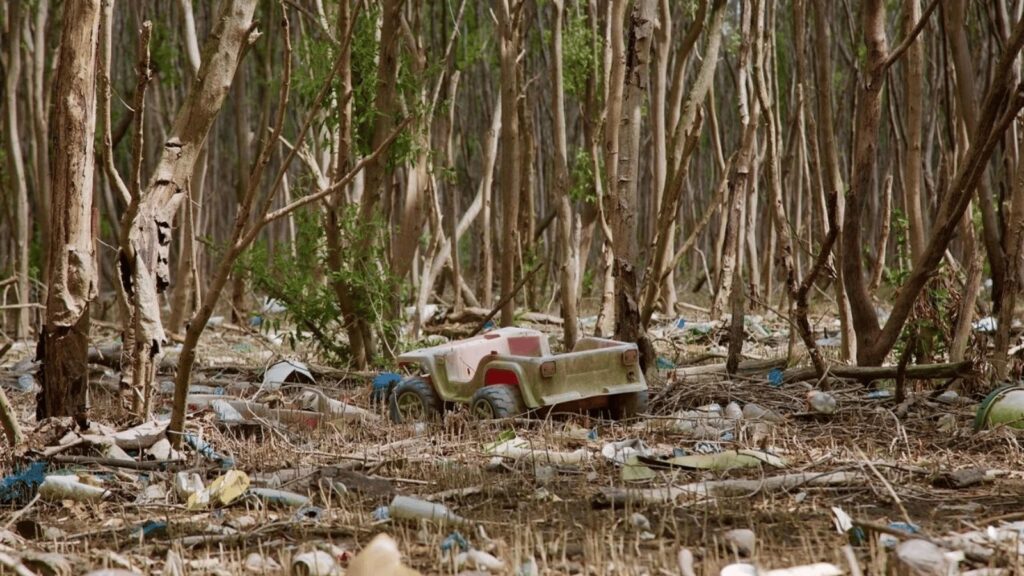Mangroves are known to trap plastic waste and stop it entering the sea, but this defense comes at a high cost to mangrove forests themselves, a new study shows.
Researchers working in Indonesia’s Central Java province found plastic carpeting half of the mangrove floor across their study area, covering roots and sediment layers and starving the trees of oxygen. The plastic accumulation could also harm mollusks, crabs and other soil-dwelling organisms forming the coastal food web’s foundations, which could trigger cascading impacts for larger animals. The study authors called for a reduction in plastic waste through education and policies such as bans on single-use plastic packaging.
RELEVANT SUSTAINABLE GOALS


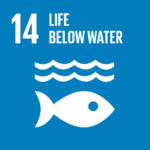

Celine van Bijsterveldt and her team had traveled to Central Java’s mangrove forests to investigate efforts to restore them. But when the researchers saw plastic trash strewn throughout the swamps, ensnaring roots and shrouding branches, they were instead compelled to examine its toll on the trees.
“It’s a crazy amount of plastic,” said van Bijsterveldt, a doctoral candidate at Utrecht University and NIOZ Royal Netherlands Institute for Sea Research, and the lead author of the resulting paper in Science of The Total Environment. “You just couldn’t ignore it.”
Although mangroves adapt to plastic debris, too much can kill them. Scientists worry that its continued accumulation could endanger these forests and the ecological and human communities depending on them. This concern is especially pressing in Indonesia, home to almost one-quarter of the world’s mangrove ecosystems and to highly acute plastic litter and mangrove destruction.
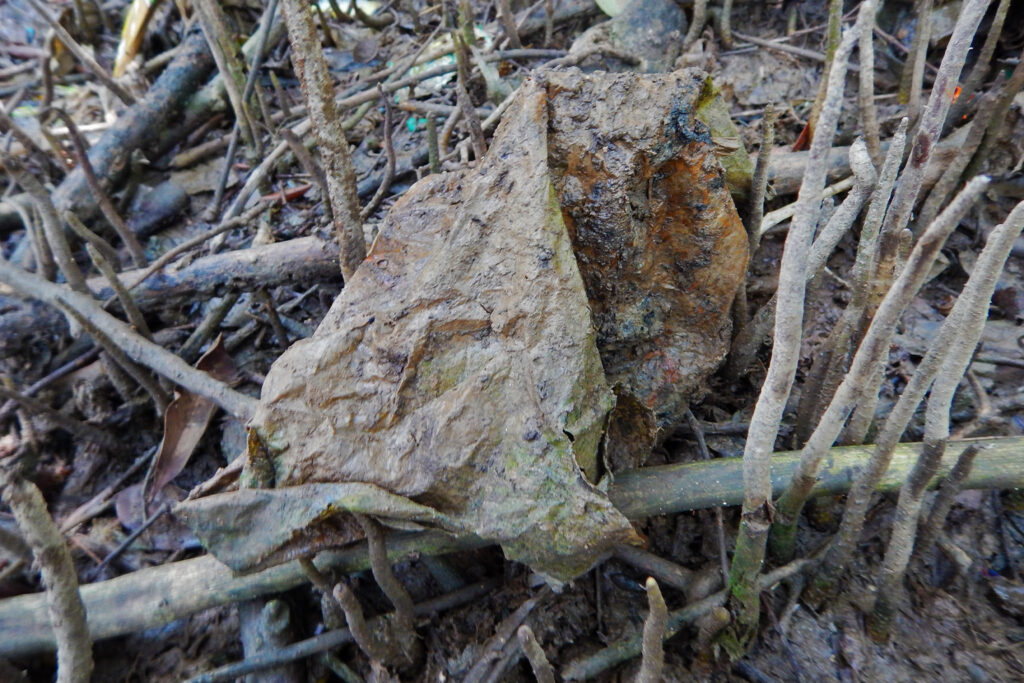
Van Bijsterveldt and her colleagues analysed the plastic’s prevalence and effect on mangrove growth and survival in Demak, a town on Java’s northern coast. In addition to field observations, they conducted a six-week experiment to determine how plastic cover affects trees’ root growth, stress and survival.
The investigators counted an average of 27 plastic articles per square meter, mostly from local areas, carpeting up to 50% of the mangrove floor. Ground core samples indicated that plastic often sat stuck in top sediment layers, causing lengthy low-oxygen conditions.
As expected, trees totally buried in plastic suffocated to death, mainly where such plastic and sediment layering occurred over roots. On the other hand, partially covered mangroves were “relatively resilient” and kept most of their leaves despite suffering stress, van Bijsterveldt said.
“It was actually amazing how they could still survive quite a bit of plastic,” she said, noting that they began growing deformed roots to escape it.
The abundance of plastic garbage observed aligns with past findings that Southeast Asian mangrove swamps trap significant quantities of plastic. While these ecosystems have long been touted as filters reducing land-to-sea pollution, the new fieldwork and suffocation trials highlight that this service “comes with a price,” van Bijsterveldt said, raising the possibility that escalating plastic buildup could degrade mangrove forests.
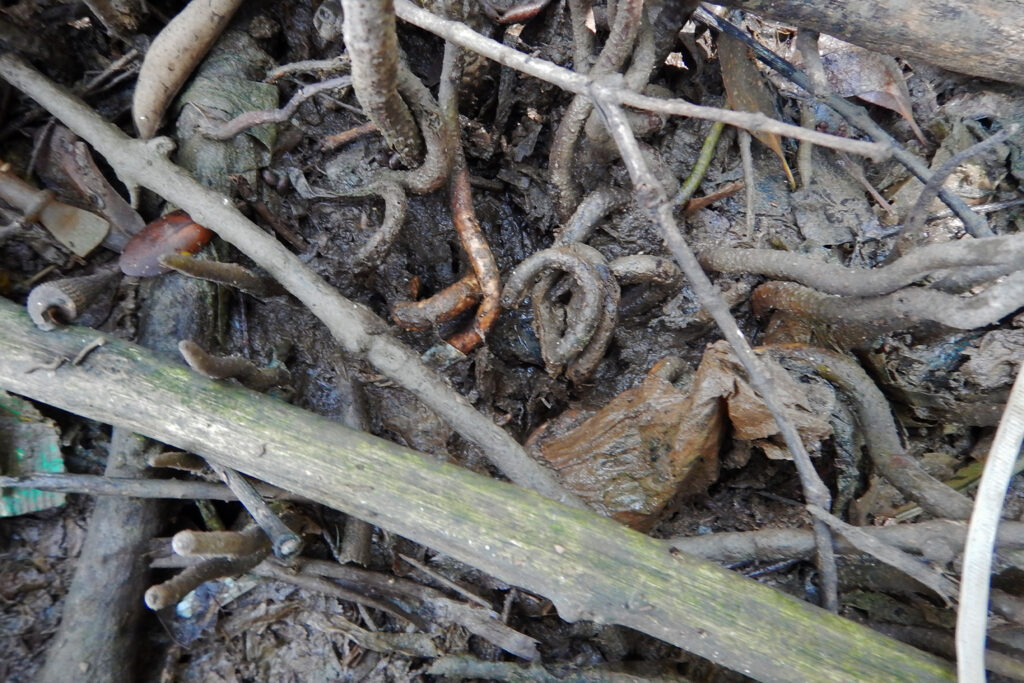
Potential Consequences Of Plastic In Mangroves
Plastic waste adds to the bigger, expanding pressures Indonesia’s mangrove swamps face from erosion, land subsidence, climate change, aquaculture and development, experts say.
However, according to Peter Harris, managing director of GRID-Arendal, a Norwegian nonprofit working to counter marine plastic, other organisms in the mangrove ecosystem will struggle “well before mangroves show any signs of stress.” Mangroves are “pretty tough compared to other species,” he said, “so they’ll be the last thing standing.”
Plastic intensification in mangrove habitats could damage fish populations breeding and nursing here, as individuals eat or get caught in the debris. Locals section off parts of the swamp to control the spreading litter, van Bijsterveldt said, but this could further complicate things for fish by cutting them off from resources. And plastic accumulation could harm mollusks, crabs and other soil-dwelling organisms forming the coastal food web’s foundations, which could trigger cascading impacts for larger animals.
Plastic entanglements in boat engines impede fishing productivity as well, van Bijsterveldt added. A plastic-driven decline in mangroves would impair the well-being of villagers who rely on fisheries, timber, ecotourism and coastal protections these ecosystems sustain.
Falling shallow-water fish numbers would force small-scale fishermen to enter the open ocean and incur greater risks and fuel costs, said Novi Susetyo Adi, a marine spatial ecology researcher at Indonesia’s Ministry of Maritime Affairs and Fisheries.
What’s more, since the swamps function as major carbon sinks, their loss would hinder climate mitigation efforts.
“We will lose all those ecosystem services if we lose mangroves,” Novi said.
Even so, he said, the study’s conclusion that mangrove mortality could worsen as plastic litter accumulates might not play out as severely as its overall coastal impact. He argues that because mangrove forests lie in the fast-changing tidal zone, the plastic’s presence shifts with the tides, currents and seasons.
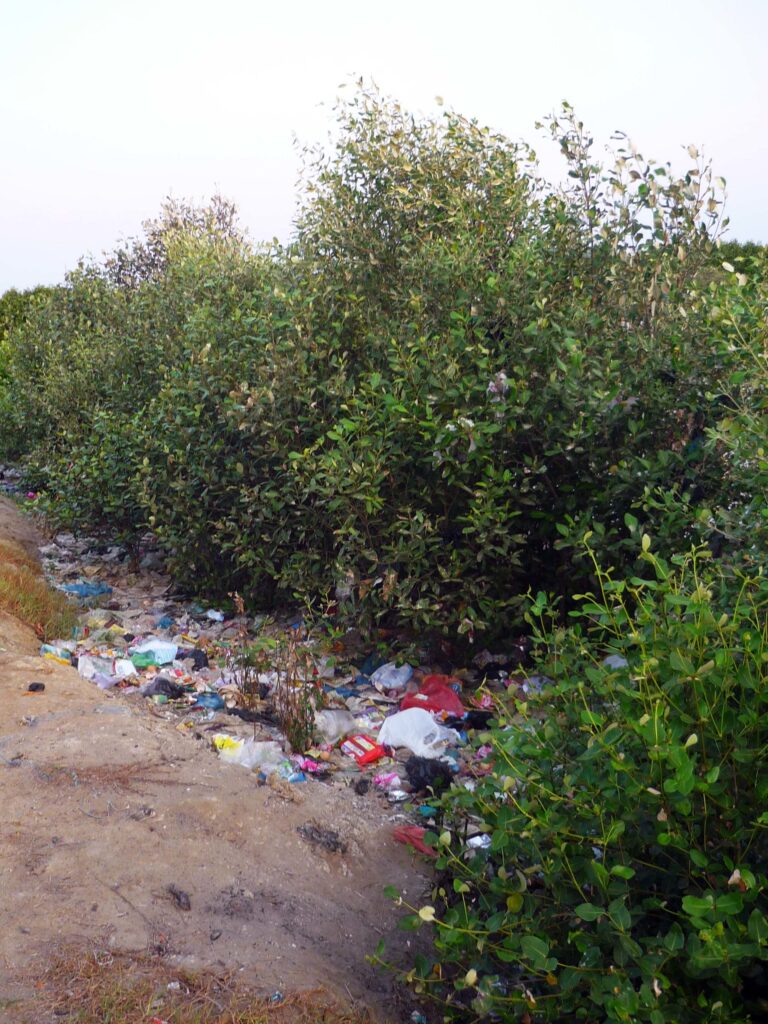
A Vision For A Holistic Solution
Deforestation has claimed 75% of Java’s historical mangroves, according to Novi, but thanks to improved understanding of their benefits, effective replanting and rehabilitation projects are now taking root in Indonesia, led by local folks, governments, businesses and nonprofits.
These initiatives, however, overlook the plastic challenge, so “it’s important that it gets more attention,” van Bijsterveldt said. Because it’s “wrong in so many places,” she said, solving the issue will not only hinge on enhancing local and national management, but it’ll also mean addressing the plastic market itself.
Four-fifths of the country’s garbage is mishandled, she said. Village residents, who currently get rid of rubbish through burning or waterway dumping, require better education and infrastructure for waste disposal. The government should provide rural and municipal trash collection, processing and recycling programs.
Considering the public lacks awareness of the broader implications of discarding plastic, van Bijsterveldt said, “it would really help if they just start in school” and teach kids that the nonbiodegradable material increasingly contaminates the environment over time.
In a nation where even shampoo comes in single-use plastic sachets, she added, laws should curb its climbing consumption, as bans in Bali and Jakarta already have. She recommends adopting traditional ecofriendly packaging alternatives, such as banana leaves.
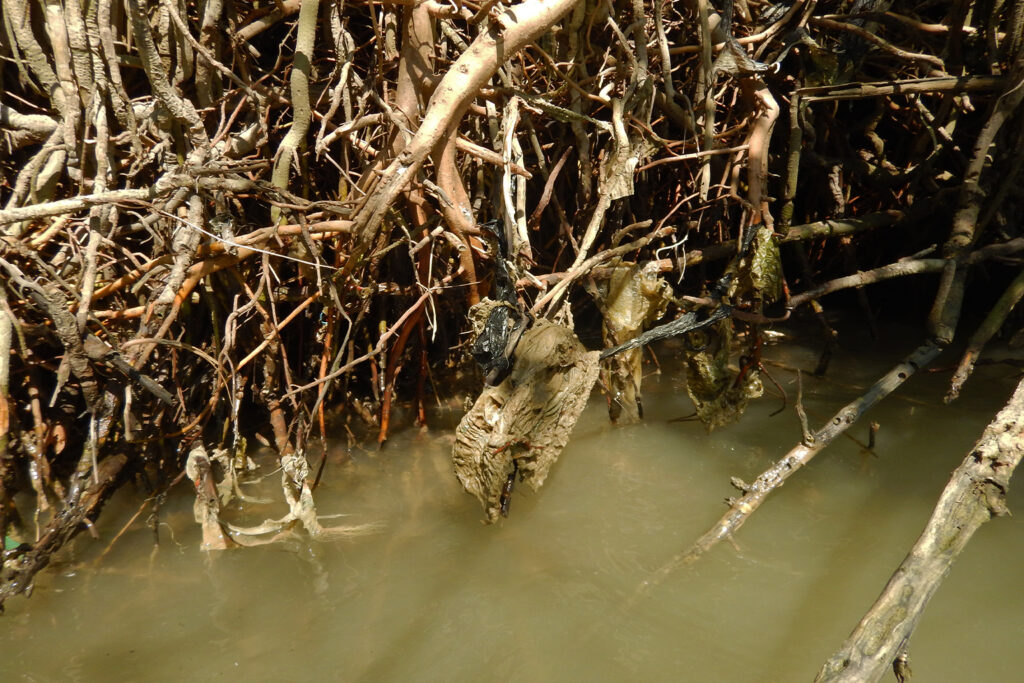
In his own work, Harris found that more than half the planet’s mangrove forests exist within 20 kilometers (12 miles) of a river mouth releasing more than a ton of plastic annually. “They’re quite exposed to this pollution problem,” he said.
But it’s most extreme in Indonesia. Given its tall mountains, heavy rains, short catchments and low wave and tidal energy, huge volumes of plastic rush down to the coasts and gather in the mangroves
“A natural process is working against the Indonesian government,” Harris said.
Since the plastic there is the same stuff originating in upstream regions and flooding coastal settlements, Novi calls for cooperation among governmental, community and private stakeholders across the watershed. “We need to tackle this matter in an integrated approach,” he said.
Citations :
Van Bijsterveldt, C. E. J., Van Wesenbeeck, B. K., Ramadhani, S., Raven, O. V., Van Gool, F. E., Pribadi, R., & Bouma, T. J. (2021). Does plastic waste kill mangroves? A field experiment to assess the impact of macro plastics on mangrove growth, stress response and survival. Science of The Total Environment, 756, 143826. doi:10.1016/j.scitotenv.2020.143826
Harris, P. T., Westerveld, L., Nyberg, B., Maes, T., Macmillan-Lawler, M., & Appelquist, L. R. (2021). Exposure of coastal environments to river-sourced plastic pollution. Science of The Total Environment, 769, 145222. doi:10.1016/j.scitotenv.2021.145222
Smith, S. D. A. (2012). Marine debris: A proximate threat to marine sustainability in bootless Bay, Papua New Guinea. Marine Pollution Bulletin, 64(9), 1880-1883. doi:10.1016/j.marpolbul.2012.06.013
Banner image: Photo by Grid-Arendal.
This article is republished from Mongabay under a Creative Commons license. Read the original article.
You may also be interested in :
Representing Indonesia, Butet Manurung Chosen As Barbie Role Model 2022


